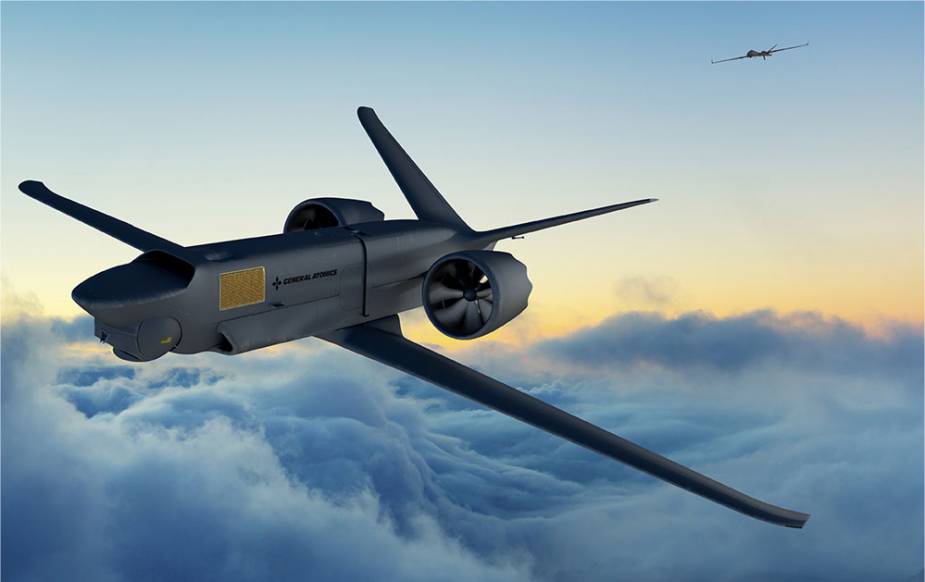According to information released by the American company, General Atomics Aeronautical Systems (GA-ASI), the company plans to develop the Sparrowhawk, a new generation of Small Unmanned Aircraft System (SUAS). The Sparrowhawk is one of many GA-ASI investments in SUAS.
Follow Air Recognition on Google News at this link
 Artist rendering of GA-ASI’s new Sparrowhawk Small UAS (SUAS), launched from an MQ-9B SkyGuardian in the distance. The Sparrowhawk is one of many GA-ASI investments in SUAS. (Picture source GA-ASI)
Artist rendering of GA-ASI’s new Sparrowhawk Small UAS (SUAS), launched from an MQ-9B SkyGuardian in the distance. The Sparrowhawk is one of many GA-ASI investments in SUAS. (Picture source GA-ASI)
General Atomics Aeronautical Systems (GA-ASI) has understood that aerial threats continue to grow and evolve. To respond to these new threats, GA-ASI has launched the development of new drones able to perform a wide range of new missions and to support stand-in jamming, suppression of enemy air defenses, artillery missions and more.
For example, GA-ASI has developed one game-changing SUAS known as Sparrowhawk, which an aircraft such as the MQ-9 can carry under its wing as it might a traditional payload like a sensor pod or a fuel tank. But when the MQ-9 reaches an area of interest on a mission, it can do something few remotely operated aircraft have ever done – launch the smaller UAS and then recover it in mid-flight.
The smaller, nimbler, swifter Sparrowhawk is difficult for an adversary to spot as it sprints low along its route. It does, via connection to its big brother, what remotely operated aircraft have been doing all along: Sends back vital information about what’s taking place, without the cost and risk of involving a human aircrew.
The Sparrowhawk might surveil an area and turn back to rendezvous with the aircraft that launched it. In a safe area, well away from hostile warplanes or anti-air systems, the larger UAS can snatch the Sparrowhawk out of the sky and continue its mission.
Once Sparrowhawk is secure, the larger aircraft can return to base – or, relying on its ability to stay aloft for many hours, continue its patrol and even launch another Sparrowhawk elsewhere later from its other wing station.
Integrating smaller aircraft with larger unmanned aircraft is possible in part thanks to advances in autonomy and multi-aircraft control pioneered by GA-ASI. As ever, the absence of human pilots on these aircraft means commanders can consider using them in ways they would never employ traditional fighters.
A SkyGuardian drone could release a Sparrowhawk with the intention of searching for hostile anti-air systems without needing to worry about the safety of the pilot. Indeed, an air commander’s goal might be to send Sparrowhawk to probe a denied environment so that it could report back about the radar or other systems that powered on or detected it – where they were, what type, and how many.
Sparrowhawk could respond with an electronic attack of its own to clear the way for other aircraft coming in behind it, jamming an enemy radar to deny its ability to sense a strike package passing through the area. Or the small aircraft could support missions focused on the suppression of enemy air defenses.
Small UAS will take the concept of unmanned aerial combat to new levels, with new capabilities like our Sparrowhawk and others leading the way in distributed aerial networking and joint, all-domain command and control. But SUAS won’t only help friendly forces deal with threats on the ground.
















